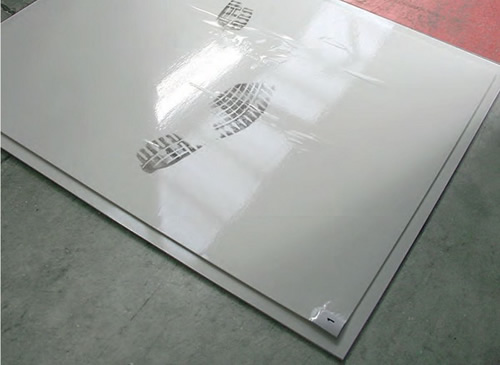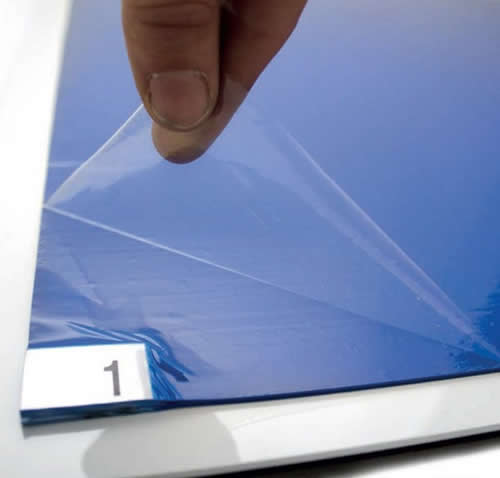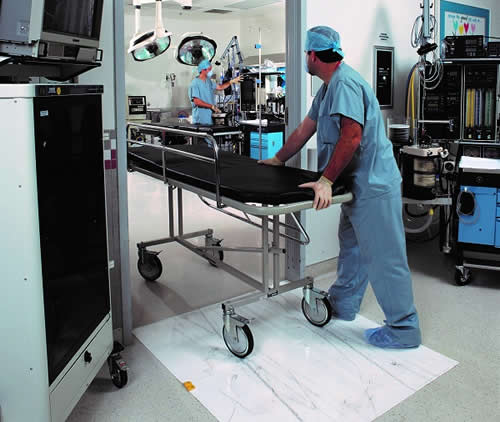Positive Health Online
Your Country

How to Keep Your Medical Treatment Areas Free from Dirt with Tacky Mats
listed in clinical practice, originally published in issue 275 - January 2022
Medical treatment rooms can be a nightmare to keep clean. Between patients, medical staff and support workers, there can be a near-constant stream of people coming and going, but you need to keep dust and dirt at bay to prevent infection.
Doctors’ and dentists' surgeries, examination and treatment rooms are increasingly benefiting from using ‘tacky mats’ to deal with shoe-borne particles – but if used incorrectly, they can be rendered ineffective.

What is a Tacky Mat?
In a nutshell, a tacky mat is a doorway/entrance mat that has a sticky layer on it. As people walk over the surface the adhesive collects any dirt and dust from the soles of the shoes, making sure that the room is kept clean and contaminant-free. When the sticky surface is no longer effective, you can simply peel it away to reveal a new adhesive layer underneath.
How are Tacky Mats Used?
Tacky Mats can be used very easily, with just a few factors to consider.
Position
The mat should be placed right at the entrance to the clean room, otherwise any steps that people take between standing on the mat and stepping into the room will re-contaminate their shoes and allow dirt through. People should be able to comfortably (and unthinkingly) step directly from the mat into the controlled environment.
Size
The size of the mat you need depends entirely on the size of your doorway. The mat should fully span the breadth of the threshold, and ideally be of a sufficient depth that people take at least one step on it with each foot (and one full revolution of any trolley or stretcher wheels/castors). This will ensure that shoes and wheels cannot make it into the room without being cleaned first.
Colour
The majority of tacky mat stockists offer white, blue or grey colour options, but the colour you choose is purely aesthetic – there is no impact on effectiveness. Lighter colour mats do, however, make it easier to see any build-up of dirt and so a white mat can make it easier to see when you need to peel the top layer away.
Installation
Most tacky mats on the market have an adhesive backing so that they can be fixed securely in place. Make sure the area you’re fitting the mat to is cleaned and disinfected, and lay the mat carefully with attention paid to minimizing any air bubbles that form. This will help the mat stay intact and in place without any accidental shifting when people step on it.
Best practice is to peel back one side of the backing, press firmly into place and then roll the rest of the mat away whilst removing the remaining backing.
If your office/treatment room is carpeted or has a floor covering that is not particularly well suited to using adhesives, then you could consider a frame to keep the mat in place.
Placement
While a standard ‘welcome’ style entrance mat is typically placed with the longer edge against the doorway, you will need to position your tacky mat so that the longest side points away from the doorframe. This ensures that shoes and wheels have the most contact possible with the mat, which will result in fewer in-room contaminants.

Refresh
When your mat has reached the point where it is no longer fully effective – either through becoming saturated with dirt or through losing its stickiness – you’ll need to refresh it. Peel back the top layer carefully and slowly, making sure you don’t release the collected particles into the treatment room or into the air. Rolling the layer into a ball as you go will reduce static build-up, and allow for easy disposal.
Refreshing can be done on a fixed cycle for rooms with a relatively standard amount of foot traffic. If the number of visitors to the controlled room fluctuates significantly from day-to-day, you’ll need to keep an eye on the mat and refresh it as and when necessary.
Layers
Most suppliers stock mats with a choice of 30 or 60 sticky layers. Depending on how often you are refreshing, you’ll want to pick a mat with the appropriate number of layers – although it’s also worth considering that if you have a lot of wheeled traffic, the 60-sheet option can present a thicker profile which can impede smooth passage.
Tacky mats have numbered surfaces, so you should always be able to keep track of how many layers are left and ensure that any scheduled refreshes have been completed.

Use Cases
Used extensively in laboratories and clean rooms, more and more customer-facing sites are deploying tacky mats to ensure the best level of hygiene possible.
Comments:
-
No Article Comments available